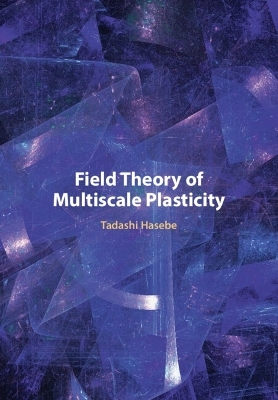
Field Theory of Multiscale Plasticity
Cambridge University Press (Verlag)
978-1-108-83660-9 (ISBN)
This unique book provides a concise and systematic treatment of foundational material on dislocations and metallurgy and an up-to-date discussion of multiscale modeling of materials, which ultimately leads to the field theory of multiscale plasticity (FTMP). Unlike conventional continuum models, this approach addresses the evolving inhomogeneities induced by deformation, typically as dislocation substructures like dislocation cells, as well as their interplay at more than one scale. This is an impressively visual text with many and varied examples and viewgraphs. In particular, the book presents a feasible constitutive model applicable to crystal plasticity-based finite element method (FEM) simulations. It will be an invaluable resource, accessible to undergraduate and graduate students as well as researchers in mechanical engineering, solid mechanics, applied physics, mathematics, materials science, and technology.
Tadashi Hasebe is Associate Professor of Mechanical Engineering at Kobe University, Japan and is an expert in a very wide range of engineering fields. More specifically, in metallic materials, including high-temperature strength, impact engineering, plastic forming technology, high-energy rate forming, theory of elasto-plasticity, and micromechanics. Professor Hasebe likes to incorporate experimental, mathematical, and numerical perspectives in his works.
Part I. Fundamentals: 1. Dislocation theory and metallurgy; 2. Dislocation dynamics and constitutive framework; 3. Dislocation substructures: universality of cell structures; 4. Single crystals vs. polycrystals; Part II. Theoretical Backgrounds: Description and Evolution: 5. Overview of field theory of multiscale plasticity; 6. Differential geometrical field theory of dislocations and defects; 7. Gauge field theory of dislocations and defects; 8. Method of quantum field theory; Part III. Applications I: Evolution of Inhomogeneity in Three Scales: 9. Identification of important scales; 10. Scale A: modeling and simulations for dislocation substructures; 11. Scale B: intra-granular inhomogeneity; 12. Scale C: modeling and simulation for polycrystalline aggregate; Part IV. Applications II: Stability and Cooperation: 13. Cooperation of multiple inhomogeneous fields; 14. Outlooks: some perspectives on new multiscale solid mechanics; 15. Flow-evolutionary law as a working hypothesis; References; Author index; Subject index.
| Erscheinungsdatum | 03.10.2023 |
|---|---|
| Zusatzinfo | Worked examples or Exercises; 4 Tables, unspecified; 45 Halftones, black and white; 583 Line drawings, black and white |
| Verlagsort | Cambridge |
| Sprache | englisch |
| Maße | 184 x 260 mm |
| Gewicht | 1730 g |
| Themenwelt | Technik ► Maschinenbau |
| ISBN-10 | 1-108-83660-7 / 1108836607 |
| ISBN-13 | 978-1-108-83660-9 / 9781108836609 |
| Zustand | Neuware |
| Haben Sie eine Frage zum Produkt? |
aus dem Bereich


